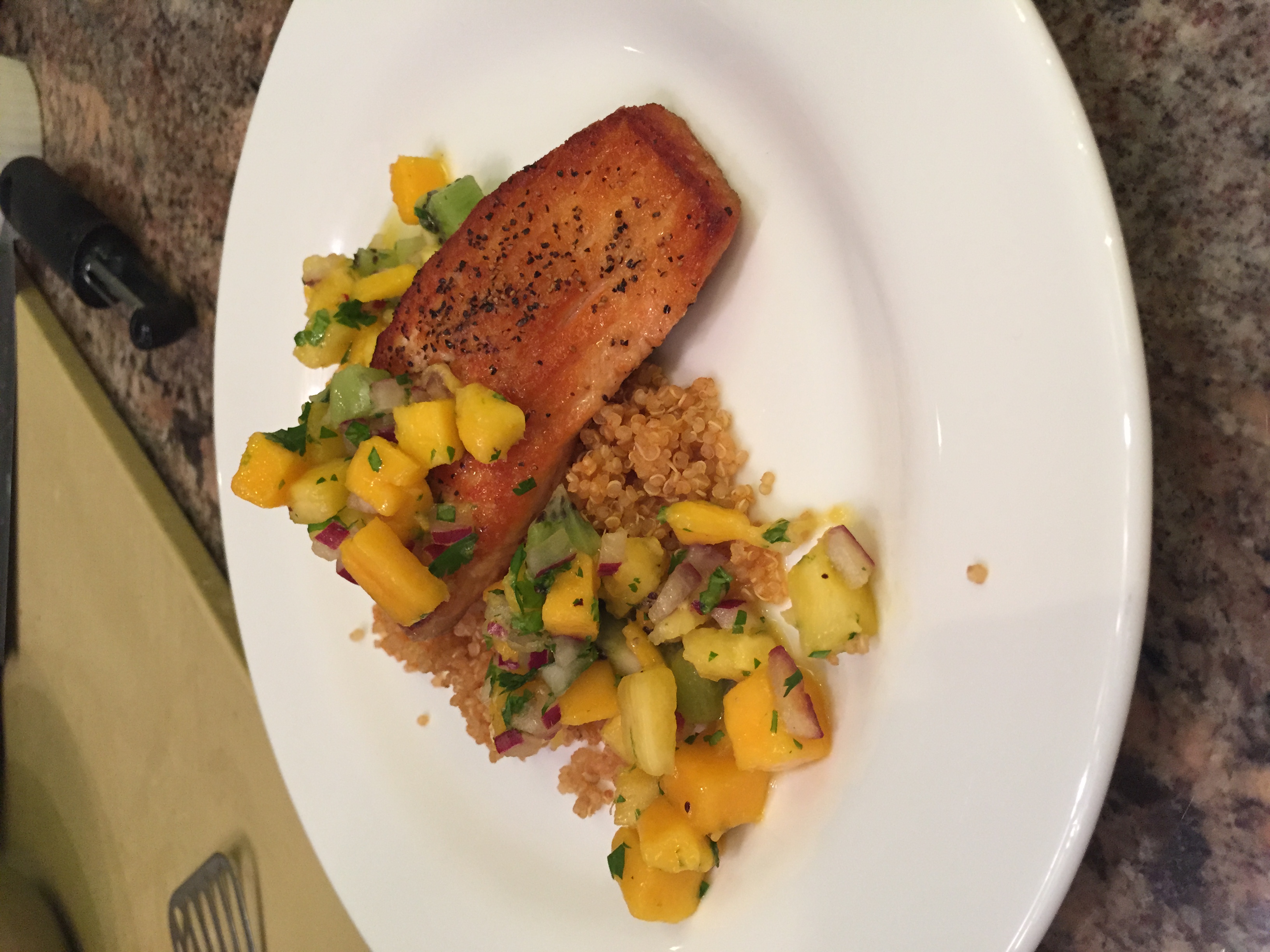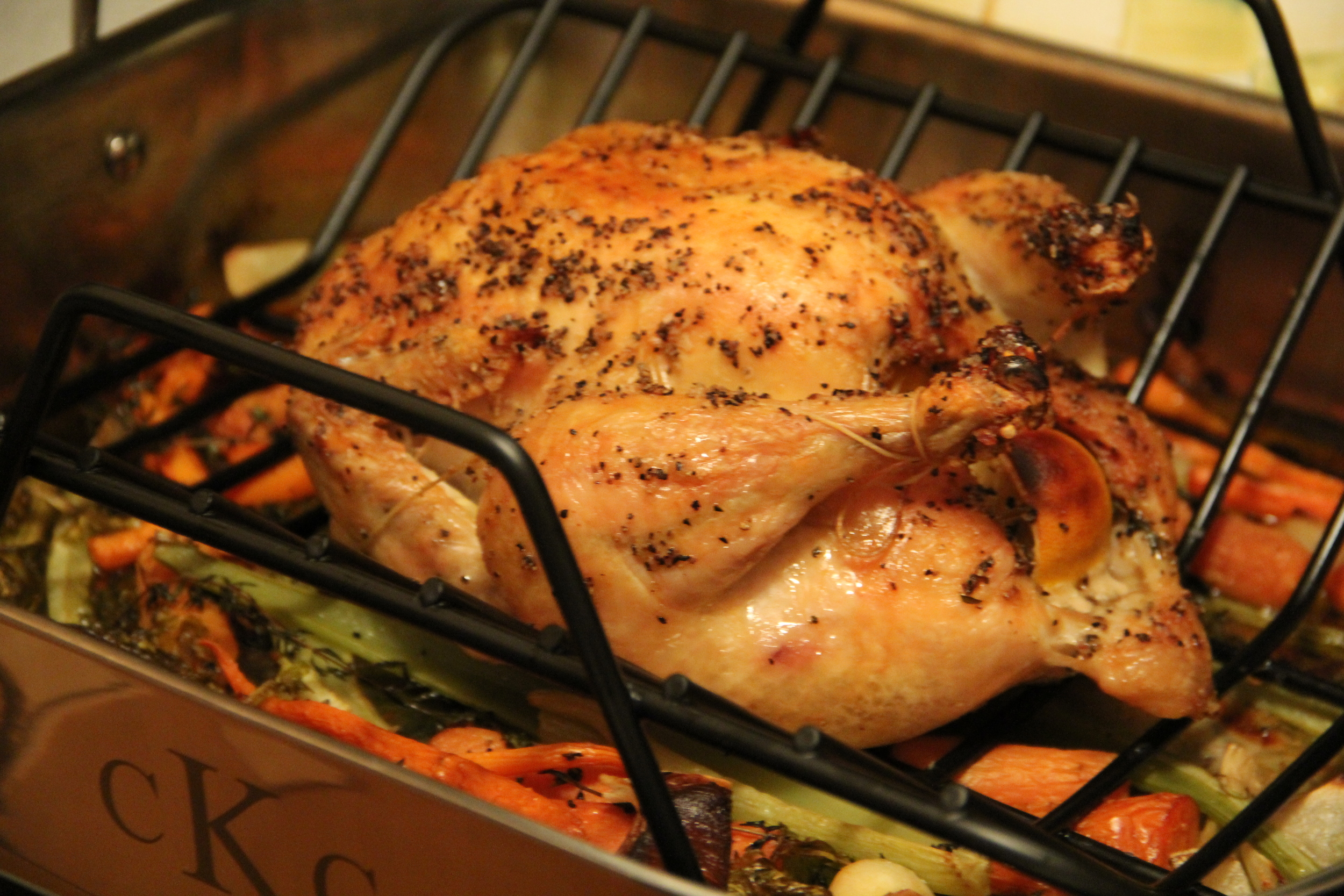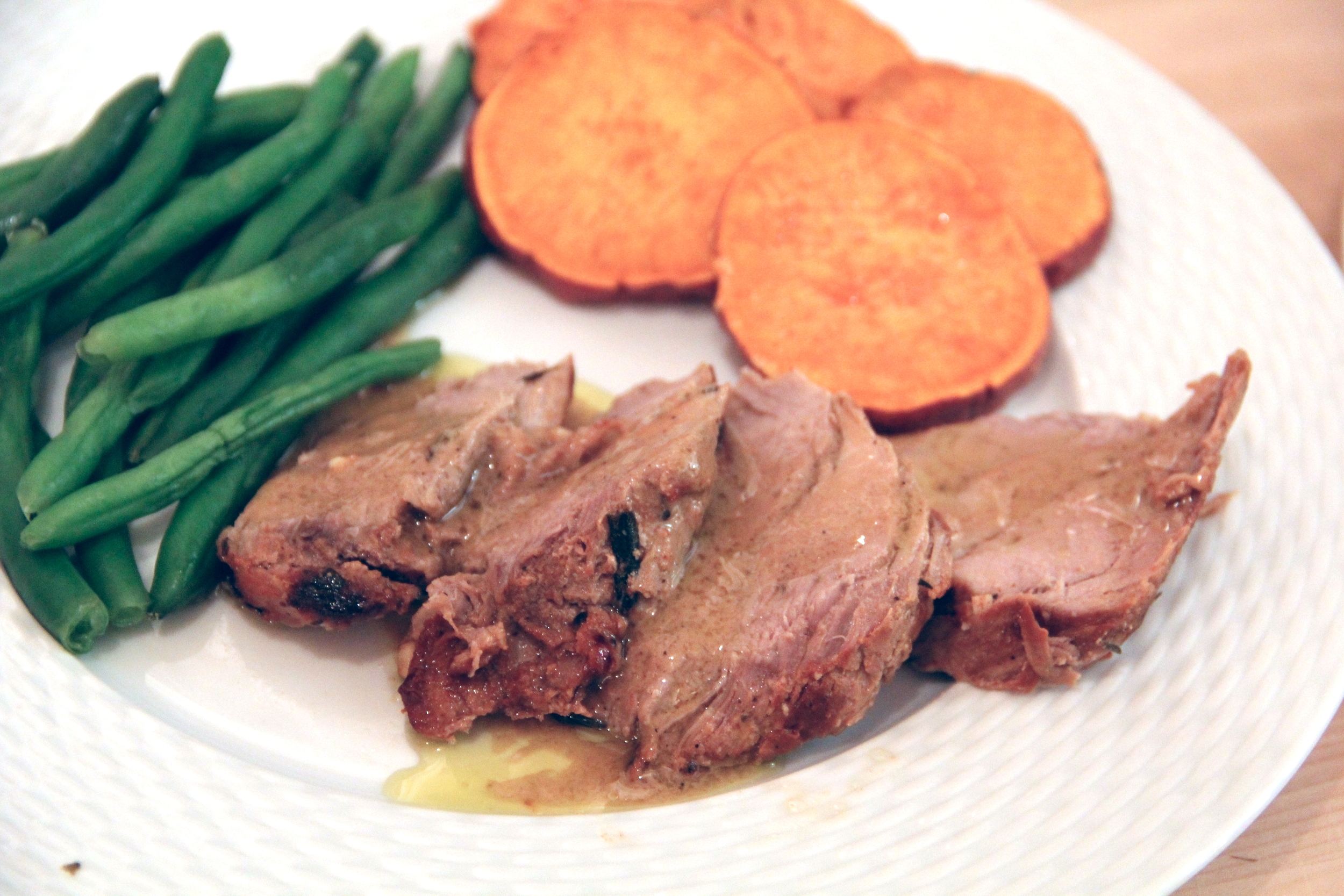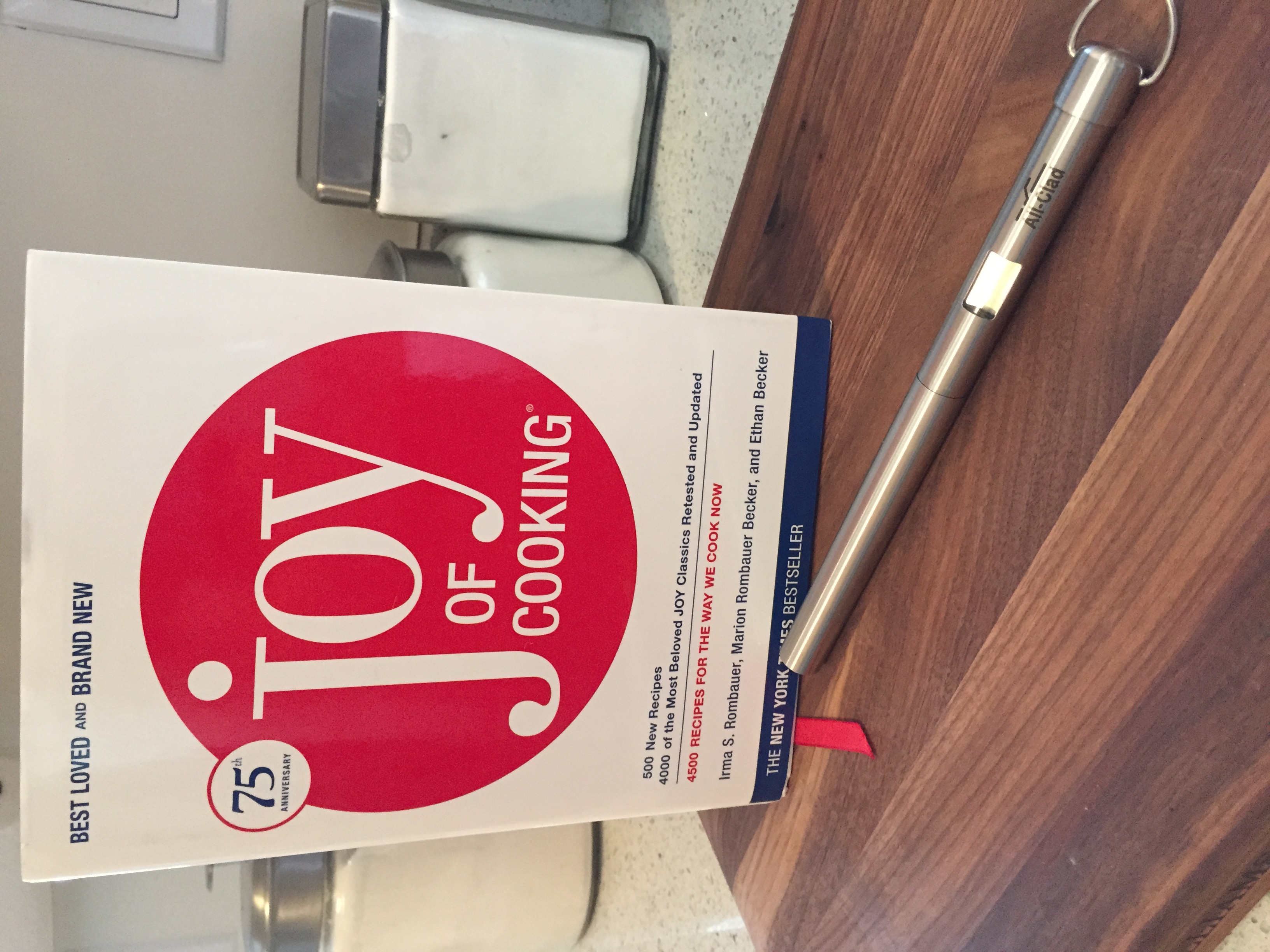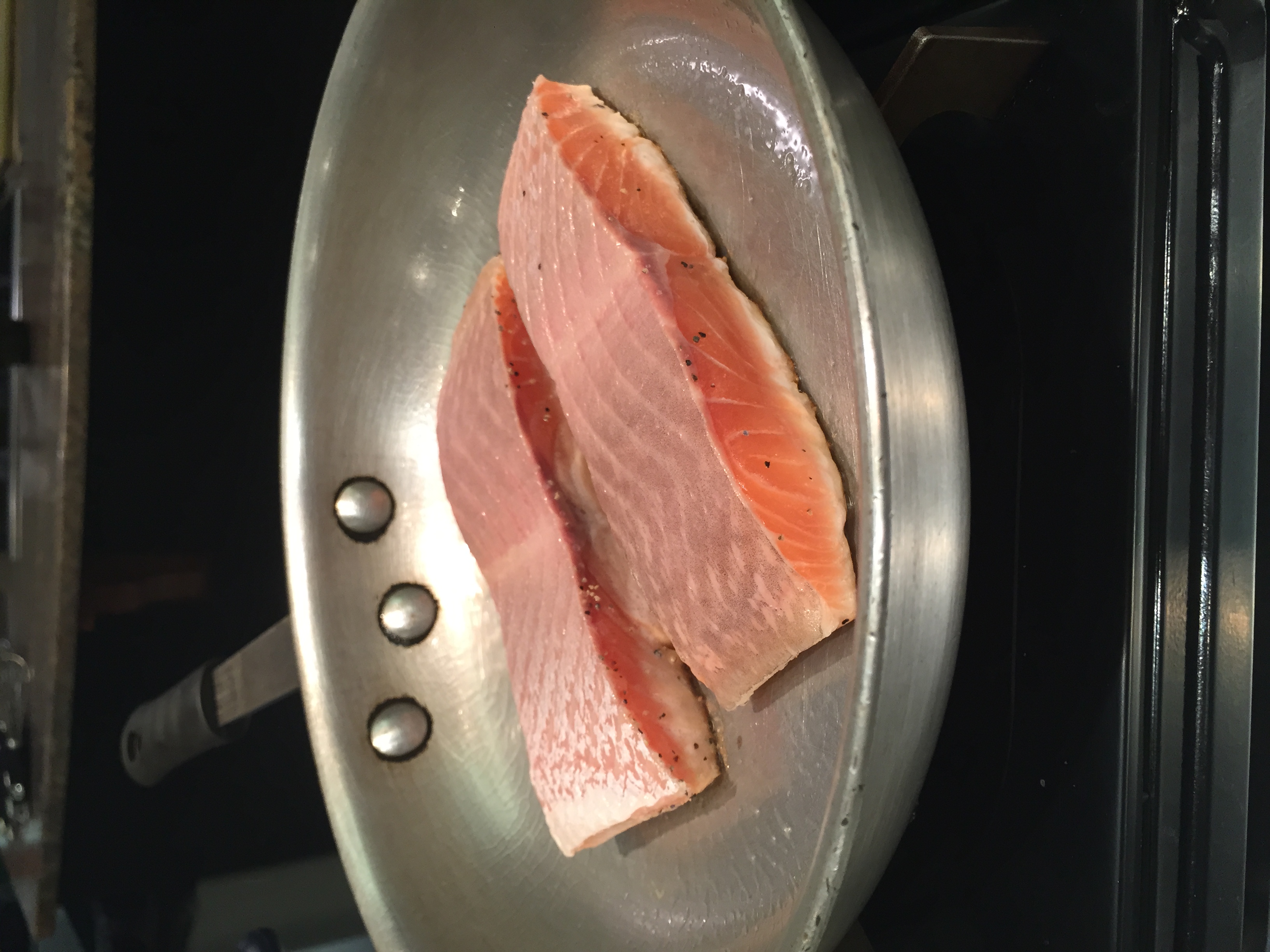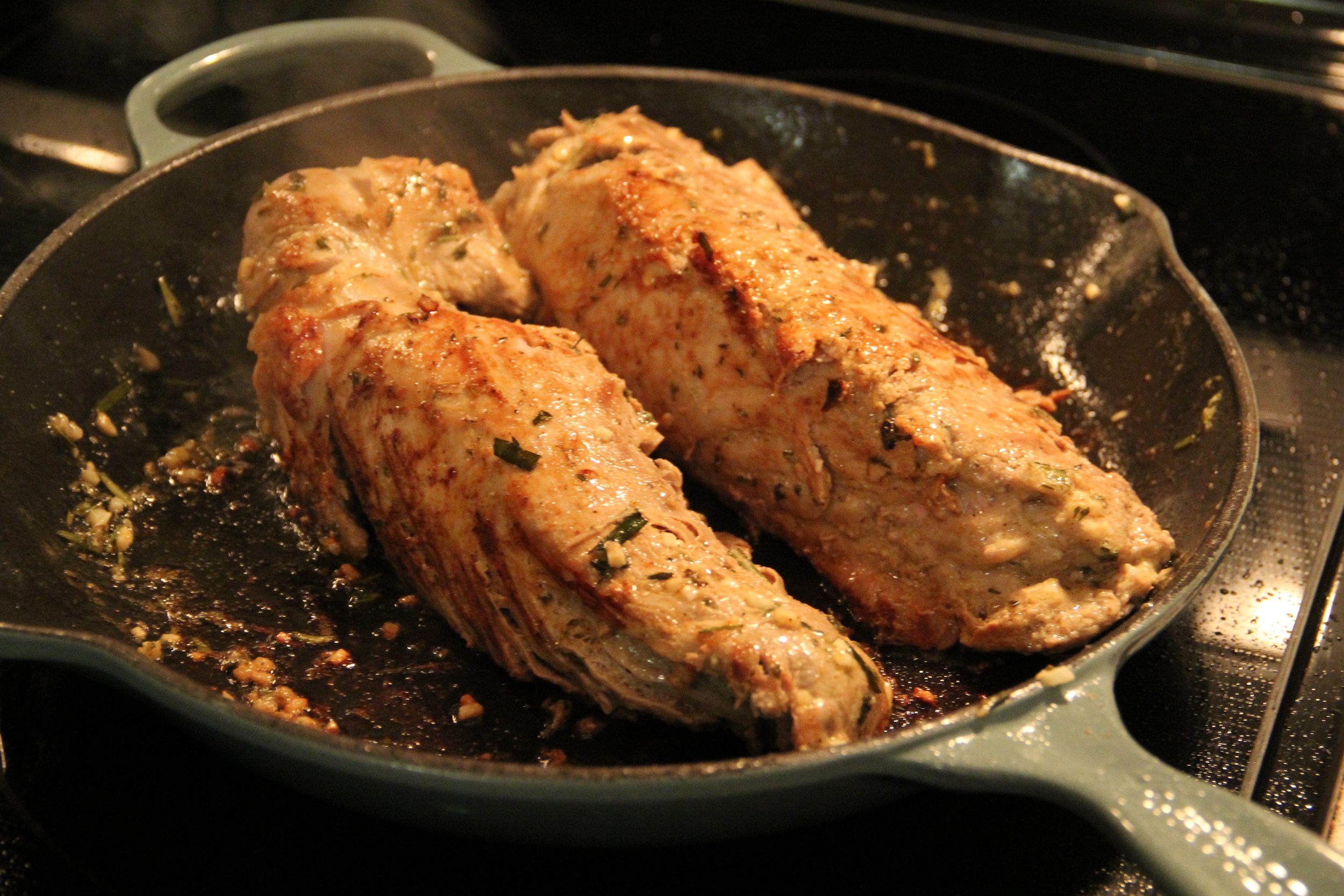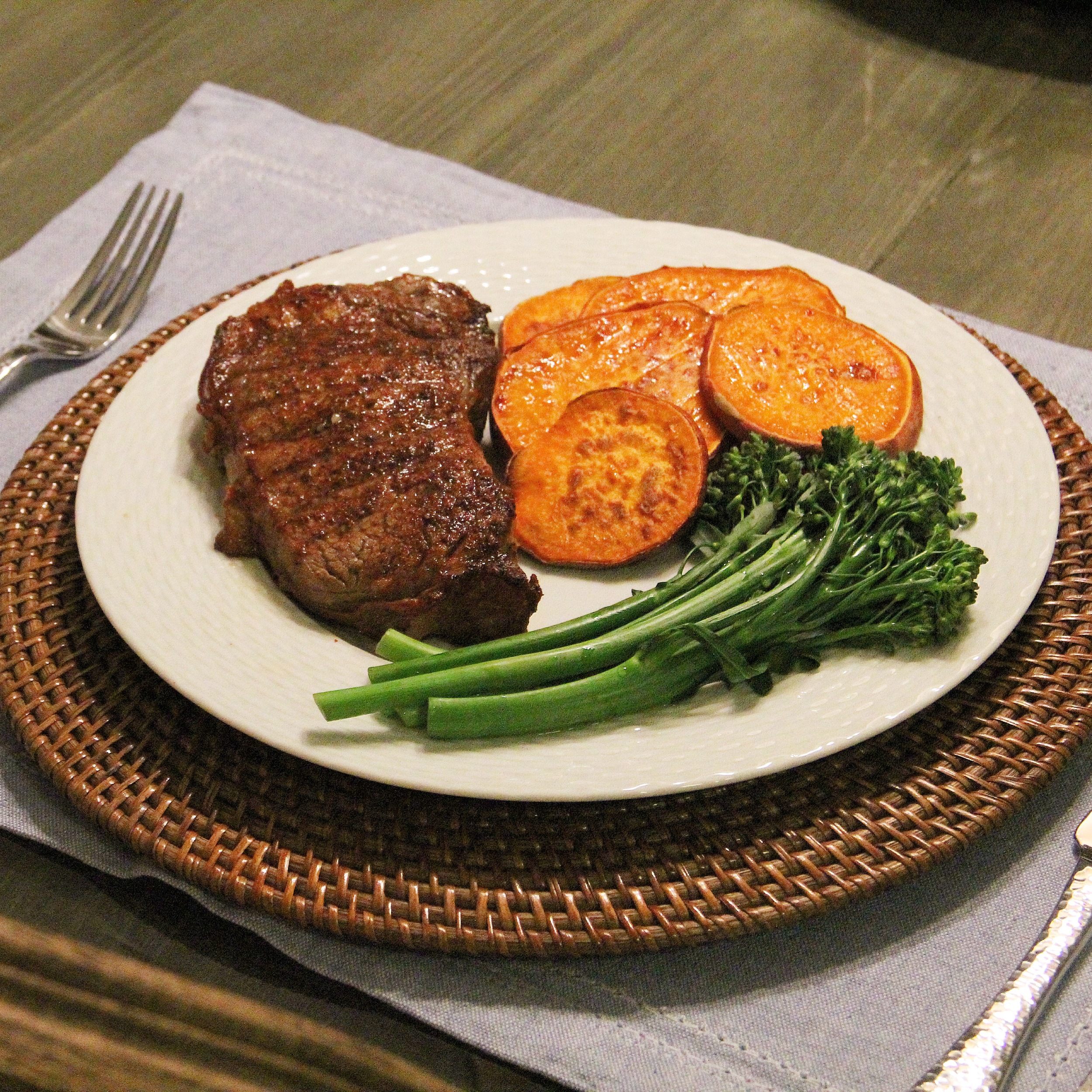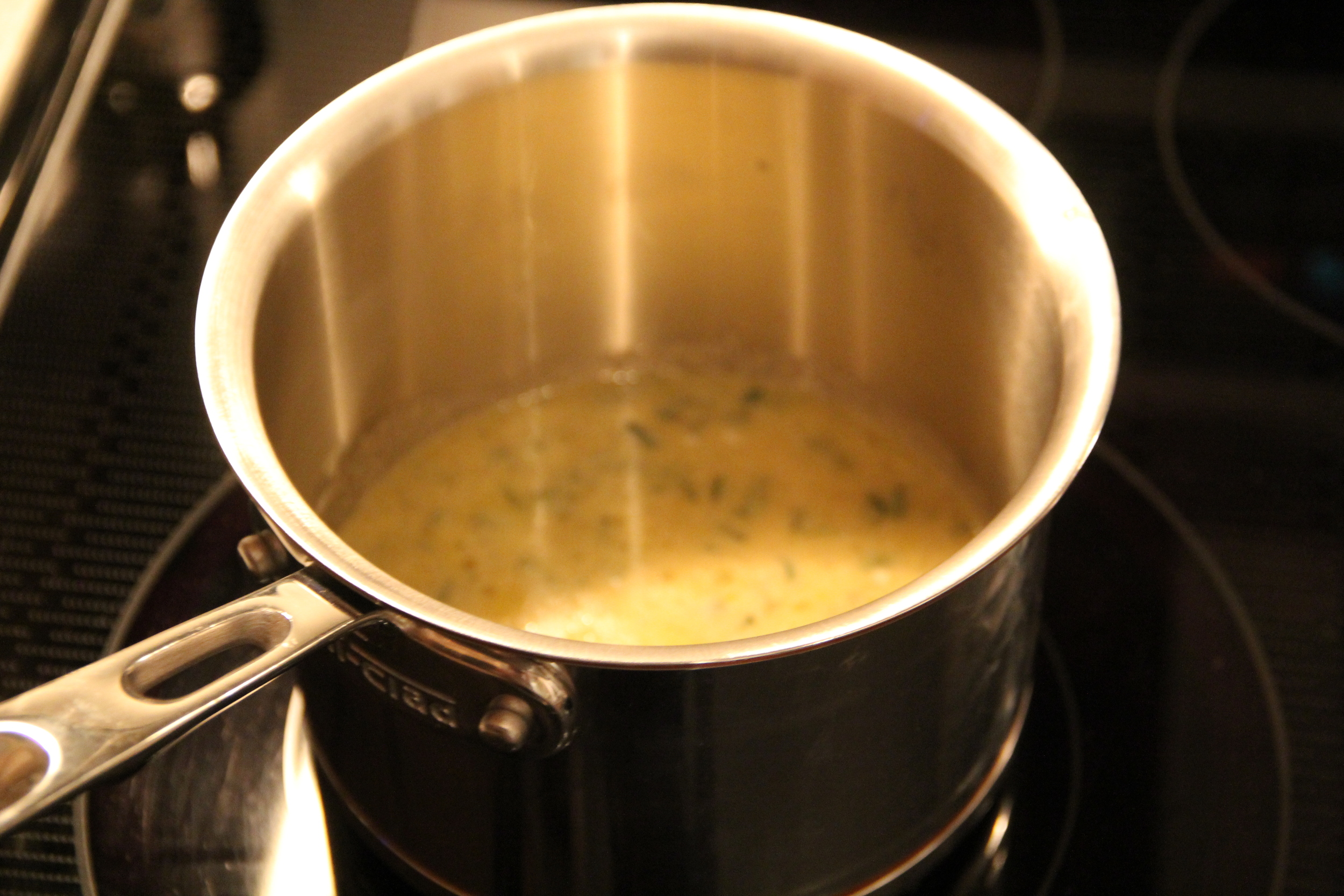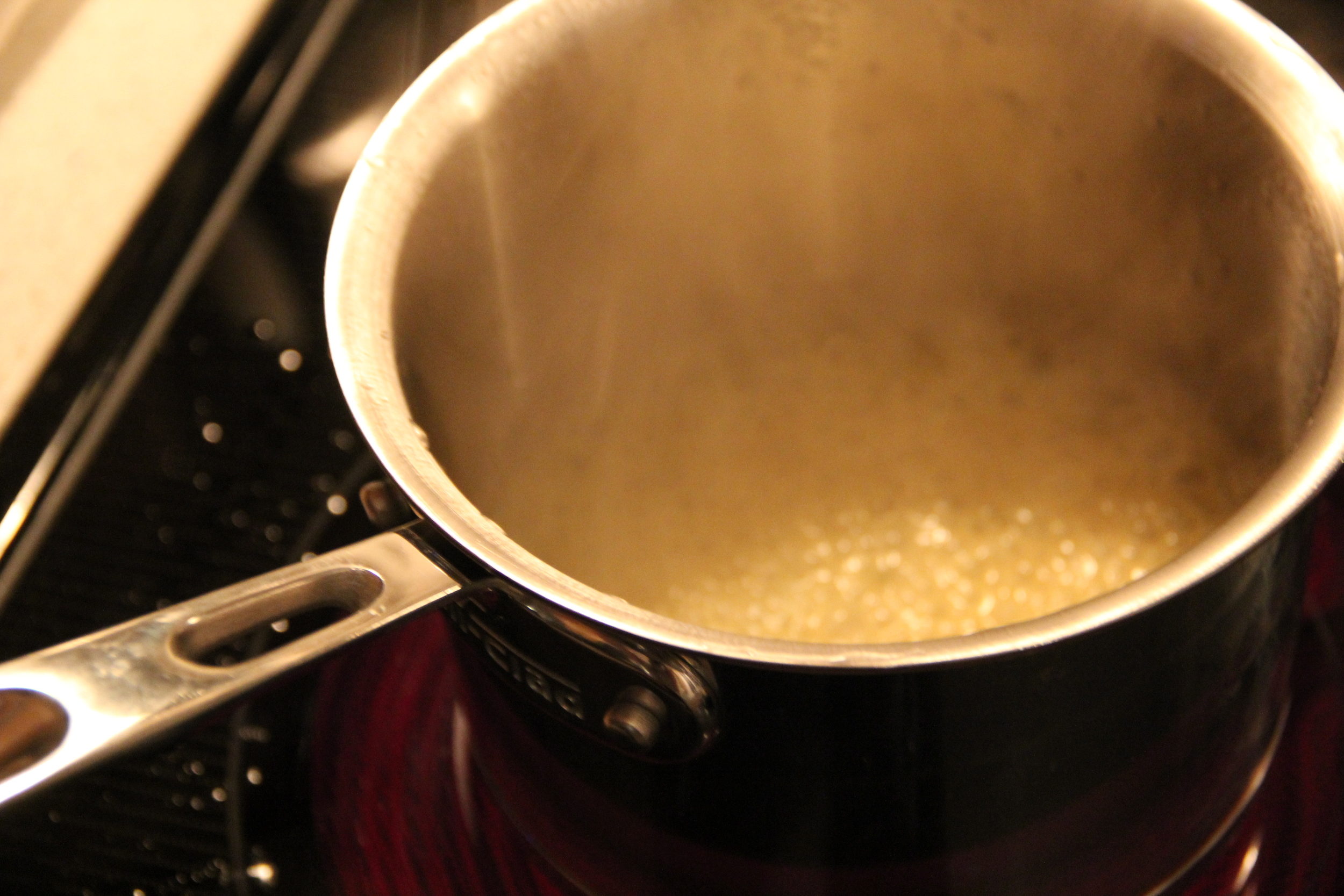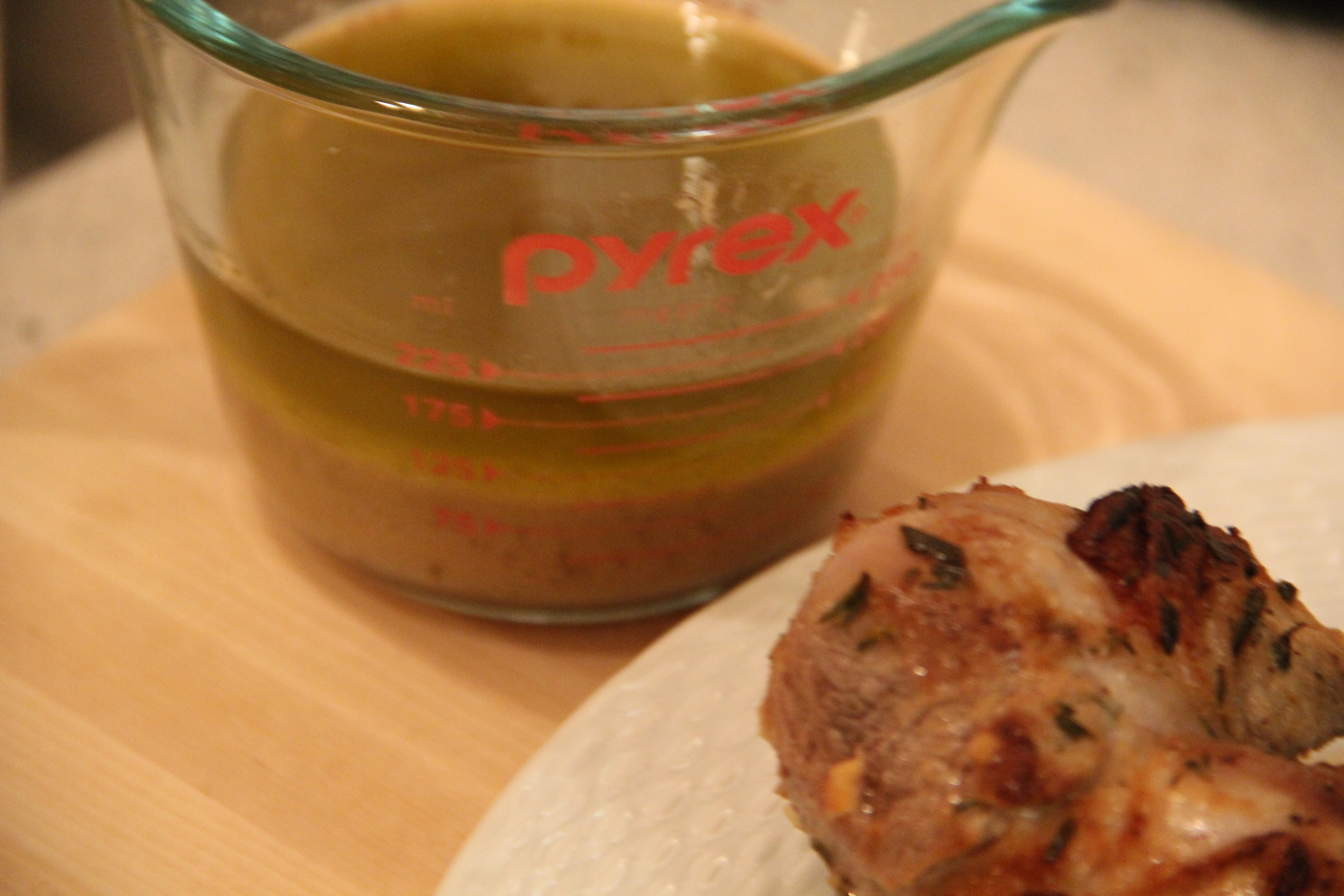Over the past few months my husband has been getting more interested in cooking (Yay!). I think that this is probably in part the result of taking an array of cooking classes for a few date nights over the past couple of months and also because he has wanted to take a larger role in contributing to our Sunday sit down dinners at home.
Last week while he was in the kitchen cooking up a pork chop and yelling to me across the house to confirm the various cooking steps, it occurred to me that it might be helpful to write a post on my basic tips for cooking meats (chicken, beef, pork and fish). Today I have compiled a list of what I believe are the essential tips to keep in mind when cooking a protein.
Room Temperature
This tip is geared towards chicken, pork and beef. Before cooking anyone of these proteins, I suggest letting the meat sit outside of the refrigerator for at least an hour. The reason being, throwing ice cold meat on the grill or into a hot pan will cause it to cook unevenly due to varying temperatures throughout the meat. For a consistent/even cook throughout the meat, it is important to let your meat come up to just about room temperature.
Season Before Cooking
There are different schools of thought on this tip. Personally I find that seasoning my pork and beef with salt and pepper 10 minutes before cooking creates a more tender and flavorful end product. For chicken, the ideal is to season it at least 24 hours prior to cooking, using a technique known as brining. While this technique is certainly fantastic, it's not something I typically have time to do, so generously salting and peppering poultry prior to cooking works well too. Taking the time to properly season your meats before cooking will definitely yield a noticable difference.
Thermometer
When I was first learning to cook meats, I would often slice into it the meat while it was cooking to check for doneness…I cringe every time I think about this rookie mistake I used to make for a few reasons. First, when you hack into meat while it's cooking, all of the juices escape leaving your meat dry. Second, serving meat that has been hacked up is not very appetizing. Finally, why the heck didn't I have a meat thermometer!?! Meat thermometers are extremely accurate and will give you a perfectly cooked protein every time. I am a huge fan of my All Clad Digital Thermometer, because I find that the digital read is more accurate than the dial. In addition to my meat thermometer, I have my Joy of Cooking Cookbook permanently bookmarked on the USDA Recommended Cooking Temperatures Page, which is so helpful and something I would recommend having readily available in your own kitchen. Thanks to the thermometer and Joy of Cooking USDA Meat Guide, I have perfectly cooked meat every time that doesn't look like it was Freddie Kruger's latest victim.
Searing and Finishing
When I am cooking a pork or beef protein, I use the following method to ensure the flavors and juices are locked in and the meat is cooked evenly throughout. Here is a breakdown of my go-to method:
- Pre-heat oven to 450 degrees fahrenheit
- Heat oven safe pan on medium-high heat
- When pan is hot and oil is flaccid, add season protein and let it sear/brown until the side that is in direct contact wih the pan naturally releases from the pan
- When it naturally releases, flip to the next side and repeat browning until all sides are seared
- While still in the pan, place browned meat directly into the oven to finish cooking, checking intermittently with the meat thermometer.
- When the meat has reached the desired internal temperature (even a degree or two below), remove from oven and lightly cover with foil to allow the meat to rest for approximately 10 minutes.
**Fish works well with the sear, but is more delicate so it will take less time and typically doesn't need to be finished in the oven.
Which oil to use?
I have found that when cooking a beef or pork, which require a higher heat, canola oil works best (since it has one of the highest smoke points). For fish, olive oil is great because it requires a lower cooking temperature. When roasting a chicken or any type of poultry, I am all about the melted butter because of the flavor.
I really do credit these tips/suggestions/guidelines for all of my meat cooking success. These are great concepts to remember the next time you are cooking a protein and will really make a difference with flavor and presentation of your finished product. For any questions not covered in today's post, don't hesitate to e-mail me at redefiningdomestics@gmail.com.

